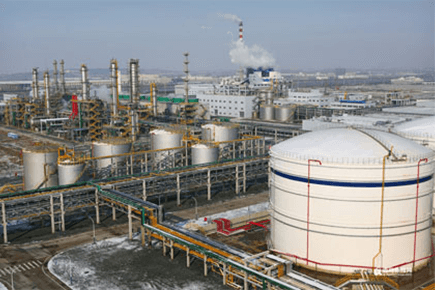
The Function of Cation Ion Exchange Resin
Ion exchange resin is a kind of macromolecule compound with functional group (active group of exchange ion), network structure and insolubility. Its full name consists of classification name, skeleton (or gene) name and basic name.
Ion exchange resins
are divided into cation ion exchange resin and
anion exchange resin
, which have the functions of softening, adsorption, desalination, purification and so on.
1. Removal of anions from water
Cation ion exchange resin is used to remove anions in water, and its maximum consumption is used in pure water treatment of thermal power plants.
2. Act on the Food Industry
Cation ion exchange resin acts on industrial devices such as sugar making, monosodium glutamate, wine refining and biological products. For example, the production of high fructose syrup: After extracting starch from maize, it is hydrolyzed to produce glucose and fructose, and then it is treated by ion exchange to produce high fructose syrup.
3. Act on Pharmaceutical Industry
Cation ion exchange resins play an important role in the development of pharmaceutical industry in the new generation of antibiotics and the improvement of the quality of the original antibiotics. The successful development of streptomycin is a prominent example. The research solution of cation exchange resins in the extraction of traditional Chinese medicine has achieved results.
4. Act on Synthetic Chemistry and Petroleum Chemistry Industry
Cation ion exchange resins are commonly used in organic synthesis as catalysts for esterification, hydrolysis, ester exchange, hydration and other reactions. Cation exchange resins can also be used to replace inorganic acids and alkalis. It has more advantages. For example, the resin can be used repeatedly, the product can be easily separated, the reactor will not be corroded, the environment will not be polluted, the reaction is easy to control, etc. In addition, the preparation of methyl tert-butyl ether is based on the reaction of isobutene with methanol using macroporous ion exchange resin as catalyst. It replaces the original tetraethyl lead which can cause serious environmental pollution.
5. Act on Environmental Protection Industry
Cation ion exchange resins have been used in many environmental protection issues of great concern. For example, many aqueous or non-aqueous solutions contain toxic ions or non-ionic substances, which can be recycled by resins, such as removing metal ions from electroplating wastewater and recovering useful substances from film production wastewater.
6. Act on Hydrometallurgical Industry
Cation ion exchange resin can separate, concentrate, purify uranium from depleted uranium ore and extract rare earth elements and precious metals.














